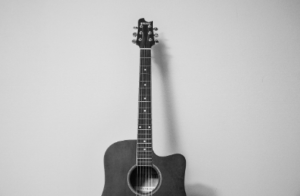The Gibson guitar has long been considered an icon, both electric and acoustic models alike, making it highly collectible.
Juszkiewicz purchased Gibson, near bankruptcy at that point, in 1986 and made some swift decisions that brought back to basics with the use of high-quality woods and abandonment of multilayered maple/mahogany necks.
History
 Gibson Guitar Corporation is one of the world’s premier Studio 1 Vintage Guitars makers, known for their dedication to quality and innovation. Their motto has long been “Quality, Prestige & Innovation.” Gibson encompasses multiple companies that manufacture fretted instruments, including guitars, basses, banjos, mandolins, and drums, along with amplifiers, strings and accessories.
Gibson Guitar Corporation is one of the world’s premier Studio 1 Vintage Guitars makers, known for their dedication to quality and innovation. Their motto has long been “Quality, Prestige & Innovation.” Gibson encompasses multiple companies that manufacture fretted instruments, including guitars, basses, banjos, mandolins, and drums, along with amplifiers, strings and accessories.
Gibson has experienced both financial success and quality control issues throughout its history. The early days saw innovative marketing tactics used by teachers who would promote and sell Gibson instruments directly to their students; later, this approach gave way to traditional music store sales channels.
Gibson unveiled its inaugural electric guitar model, the ES-150, in 1935. While this early solid-body electric was an early precursor of today’s solid-body electrics, its design wasn’t without flaws; for instance, Les Paul complained of problems caused by wrapping strings under its trapeze tailpiece, which caused intonation issues. Finally, this issue was addressed with the launch of their Tune-o-matic bridge in 1954.
Design
Gibson guitars have long been recognised for their revolutionary design. Legendary acoustic models like the J-45 and Southern Jumbo remain iconic body shapes to this day, while in 1939, Gibson revolutionised guitar playing with their groundbreaking cutaway design, giving players unprecedented upper fret access.
Studio 1 Vintage Guitars has long pioneered innovative approaches to marketing and sales. For instance, in the early twentieth century, they developed a network of teachers who would distribute Gibson catalogues and discounts directly to their students; this strategy served as an effective precursor for more conventional selling approaches, like offering guitars through music stores.
Gibson has taken an innovative approach to consumer marketing by engaging famous musicians as endorsers – such as Chet Atkins, Tom Petty and Mathew Sweet – as endorsers for its products. Not limited to electric and acoustic guitars alone, Gibson also manufactures mandolins, bass guitars, amplifiers, drums and keyboards – as well as having acquired numerous smaller guitar-related businesses over time.
Construction
Gibson strives to maintain and improve the quality of its Studio 1 Vintage Guitars production in addition to research and development efforts by reducing manufacturing costs and enhancing ergonomics. An outstanding example of Gibson’s efforts at improving the playability of its instruments is found with its Les Paul Deluxe ’70s guitar model, featuring a non-weight relieved mahogany neck, thicker C shape than SlimTaper profile, contoured heel and easy access to higher frets on the neck.
Gibson announced the acquisition of Onkyo Corporation, a Japanese producer of audio equipment and home theatre systems, in 2012. This partnership has extended their reach into consumer electronics while simultaneously expanding their global sales capabilities.
Sound
There’s much that goes into crafting the sound of an acoustic guitar, with body shape and construction having a major influence on its tone. Gibson acoustic guitars stand out by featuring balanced tonal responses that deliver rich resonance that has become legendary – perfect for fingerstyle melodies or strumming bold chords; the soulful resonance of Gibson acoustic guitars will delight listeners and musicians alike!
Other elements that contribute to the sound of a Gibson guitar include pickups and the wood used in its body construction. A Les Paul typically features a maple top with a mahogany body, while an SG typically sports all mahogany construction; typically, maple tops tend to offer brighter-sounding instruments, while mahogany bodies offer warmer tones.
Gibson has long been at the forefront of electric guitar design, pioneering groundbreaking innovations like the first cutaway design, allowing players to access all upper frets of their instrument for intricate melodies and lead lines.
Studio 1 Vintage Guitars has seen its share of struggles throughout its long history and was even facing Chapter 11 bankruptcy before they were saved from certain doom by hedge fund KKR in 2018. Since then, however, Gibson has begun revitalising their classic models while opening production plants in Memphis, Tennessee and Bozeman, Montana.